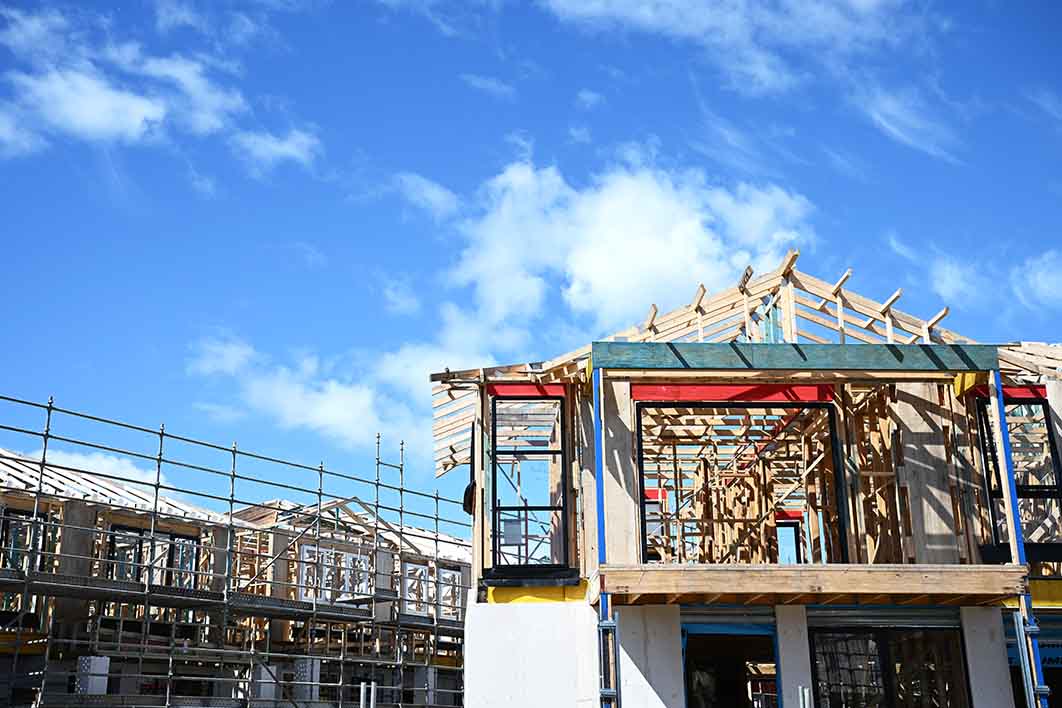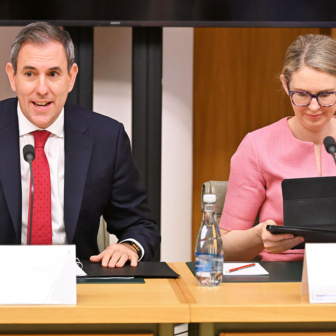Australia has an “unhealthy” housing market overly reliant on the private sector. This might seem a surprising observation from the former national president of the Property Council, Susan Lloyd-Hurwitz, who recently ended a decade as chief executive of Mirvac, one of Australia’s biggest developers. But Lloyd-Hurwitz doesn’t always fall into line with dominant industry views. Earlier this year she committed the heresy of supporting curbs on negative gearing and capital gains tax concessions.
She didn’t repeat that call in front of 1300 delegates at the National Housing Conference in Brisbane, but she came close, saying it should be possible to have a grown-up conversation about tax. She said Australia’s taxes encouraged property investors to focus on capital gains rather than a steady income from rents. A “healthy” housing market, she said, would prioritise “homes not assets.”
Lloyd-Hurwitz now chairs the interim National Housing Supply and Affordability Council, set up at the start of the year to advise the federal government on housing policy. In wide-ranging comments, she spoke passionately about the need to build a better and more secure rental sector, pointing out that more than 200,000 poor households hand over at least half their income to their landlords. She described housing as essential infrastructure akin to schools and hospitals, something that can’t be left to the private sector to sort out.
Yet a major thrust of the federal government’s response to the housing crisis does just that. In the updated National Housing Accord accepted by national cabinet, Labor wants the private sector to build 1.2 million “well-located” homes in five years, in the expectation that those new dwellings will bring down prices and make finding an affordable home easier.
Meeting this ambitious target would require an unprecedented rate of building: 60,000 new dwellings every quarter for five years straight. Steven Rowley from Curtin University told the conference that Australia has never achieved that level of residential construction, and only briefly approached it in early 2017. Currently, at just over 40,000 new homes a quarter, the industry is falling well short.
The federal government sees more efficient planning as the key to unlocking the residential construction boom required to meet its target. A blueprint adopted by national cabinet and supported by $500 million in competitive grants aims to streamline approvals, boost local decision-making capacity and fund essential infrastructure. Canberra is also holding out $3 billion worth of incentives to get the states and territories to improve planning systems. The money will flow as bonus payments once a threshold level of new dwellings is passed.
Rowley doubts such measures will be enough. While people love to blame the planning system for a lack of housing supply, he said, it’s market conditions that determine construction levels. And market conditions “just aren’t right.” “The last three years have seen unprecedented cost growth,” he added, “and that means development is unlikely outside the highest return areas.”
Tanya Steinbeck, chief executive of the Urban Development Institute of Australia WA, spoke about the situation in Perth, where construction costs render medium- and high-density residential projects unviable unless the underlying land values are already high. In other words, only upmarket developments in wealthy suburbs are likely to proceed.
According to Rowley, the only way we’ll get 1.2 million new homes is by dramatically rebalancing developers’ costs and the prices they can command. Construction stimulated by a sharp increase in property prices and rents would defeat the purpose of a scheme that aims to make housing more affordable.
Falling costs offer a more hopeful way forward, but Rowley believes costs have been driven up by factors that are largely beyond government control — labour shortages and the rising price of building materials, for example, and more expensive finance. Governments don’t set interest rates and have little influence over the cost of timber, bricks and steel. And while they can, over time, train more tradespeople, governments can’t stop qualified workers defecting to get better wages in the mining sector.
Even if costs moderate and supply chains flow more smoothly, it will take time for industry to respond to improved conditions. The construction tap can be turned off swiftly, said Rowley, but turning it on again is much slower.
Innovation holds out some promise. “We can do things faster without compromising quality,” said Lloyd-Hurwitz, describing an experiment carried out by Mirvac. Twelve terrace houses were built using traditional methods and twelve using a modular approach, with components of the houses made in factories and assembled on site. The modular homes were completed more quickly, with less waste and less neighbourhood disruption.
More generally, prefabrication is growing rapidly. It can help overcome skills shortages and the difficulty of getting workers and materials into remote locations like western Queensland.
But possible savings from innovation may be offset by other factors that make building more expensive. After all, we don’t just need more houses, we need better houses. From the floor of the conference, delegates called for homes that people with a disability can live in easily and homes that allow residents to “age in place.” Updated design standards often increase costs in the short term, even if prices come down again once economies of scale are achieved.
Extreme weather events, meanwhile, are prompting tighter planning controls over where homes can be located, and more stringent building codes in areas at risk from floods and fires. Energy-efficient homes are needed in greater numbers, built from materials with lower embodied emissions, but governments are dragging their feet.
In 2022, after years of negotiation, the states and territories agreed to making seven-star energy efficiency mandatory under the National Construction Code, with the changes to take effect in May this year. After industry lobbying, most states have delayed implementation, saying builders need more time to prepare. The result is grim: no improvement in housing efficiency standards since 2009. Ralph Horne from RMIT told the conference that if higher standards eventually take effect, they will only match ratings for new homes achieved twenty years ago in comparable nations.
The qualifier “well-located” poses another challenge to building 1.2 million homes. It’s code for increasing urban density in established suburbs using medium-rise developments to fill in the “missing middle” — a reference to both the lack of new homes in middle-ring suburbs and the lack of mid-rise apartment projects. A break with the pattern of going up in the centre and out at the edges has so far proved elusive.
More than two decades ago, the Victorian government’s Melbourne 2030 plan aimed to locate a “substantial proportion” of new housing in sites that had good access to services and transport, and to set “clear limits to metropolitan Melbourne’s outward development.” The aim has been partially met by high-rise inner-city towers sprouting up in the CBD, but greenfield estates on the urban fringe continue to accommodate most of Melbourne’s population growth. Some “transit oriented” residential development has sprung up around train stations — Box Hill is a notable example — but new housing in middle-ring suburbs is otherwise limited.
As Lloyd-Hurwitz pointed out, the average dwelling density of middle-ring suburbs is typically around 750 homes per square kilometre, whereas new greenfield estates now achieve densities of 2000 homes (thanks in part to smaller block sizes). Tanya Steinbeck said that while Perth’s established suburbs are dominated by freestanding houses with three to five bedrooms, the growing demand is for one-bedroom apartments, leading to massive underutilisation of existing housing stock.
Transformation of the urban landscape could be encouraged, Steinbeck said, by shifting from stamp duty paid on sales to a broad-based property tax, another long-sought policy reform. This would reduce the financial barrier to people “right sizing” their homes as their circumstances change. The ACT has gone done this path, but other states and territories are unlikely to follow unless the federal government plays a coordinating role. So far, it’s shown no inclination to do so.
There was talk of easier permitting for backyard granny flats, hardly a recipe for top-quality urban redevelopment. But Lloyd-Hurwitz also referred to Auckland’s 2016 “upzoning” to enable the conversion of family homes on suburban blocks into mid-rise developments without running the gauntlet of planning objections. This has been credited with precipitating a boom townhouse development that has slowed the increase in Auckland rents and real estate prices relative to other New Zealand cities (although causal link is disputed).
The aim, said Steinbeck, is not just density, but density done well. The risk of liberalising planning rules is that we’ll get what she called “dumb density” — small-scale developers replacing family homes on large blocks with two or three townhouses that lack energy efficiency and don’t make the best use of scarce land. Such piecemeal infill occurs without upgraded infrastructure and amenity to improve the neighbourhood for all residents.
My conversations with delegates during the conference breaks often came back to this challenge. Doing density well is hard because it means assembling fragmented housing blocks into parcels big enough to develop at scale — few developers have pockets deep enough to engage in such activity and there are few explicit incentives in planning schemes.
The National Housing Accord also includes an aspiration for 20,000 of the 1.2 million “well-located” new homes to be “affordable.” To put it kindly, this is a modest ambition, amounting to less than 2 per cent of all new dwellings over the next five years. If we include the 40,000 social and affordable homes that are supposed to be built with money flowing from the newly established Housing Australia Future Fund and the extra billions extracted by the Greens — and an extra 20,000 dwellings completed independently by state governments over the same time frame (a generous estimate) — that still amounts to only 80,000 “affordable” homes or less than 7 per cent of 1.2 million new dwellings.
Affordable is, in any case, a notoriously vague and contentious term. It’s usually taken to mean rents 20 per cent lower than the prevailing rate for a similar dwelling in the same area. But, as Lloyd-Hurwitz remarked, a discount in a high-priced market isn’t necessarily affordable, especially for tenants on low and moderate incomes.
Despite the challenges, the overall mood at the National Housing Conference was upbeat. As AHURI managing director Michael Fotheringham said in his welcoming remarks, housing has never been more prominent in public discussion than it is today. There was palpable excitement, especially among not-for-profit community housing providers, about bidding for a share of the new funds flowing in their direction. They want to get on with building homes for the people who most need them.
Delegates welcomed the federal government’s efforts to coordinate tenancy reforms via national cabinet so renters around the nation get a better deal, and they are encouraged by the new dynamism apparent at the state level. Since May, Queensland has a dedicated housing department for the first time, led by a minister, Meaghan Scanlon, whose parents both grew up in public housing. Rose Jackson, housing minister in the new NSW government, has launched herself into the job with energy and plain speaking, and Victoria has just released its long-anticipated housing statement.
If there was a general view of the five-year target of 1.2 million homes, it was probably that the ambition is welcome even if it’s unrealistic. Meeting the target would increase Australia’s total housing stock by about 2.4 per cent every year. Curtin University’s Steven Rowley said this could have a moderate impact on rents and house prices, but he doesn’t think it will make homes dramatically more affordable.
What’s needed, he thinks, is sustained public investment to build new social housing in perpetuity, allowing us to steadily build the stock of decent homes that are truly affordable for Australians on the lowest rungs of the income ladder. He worries that the current burst of new funding could again be short-lived. Like everyone else at the conference, I hope he’s wrong. •
Peter Mares facilitated a session at the National Housing Conference and AHURI paid for his travel from Melbourne to Brisbane.




